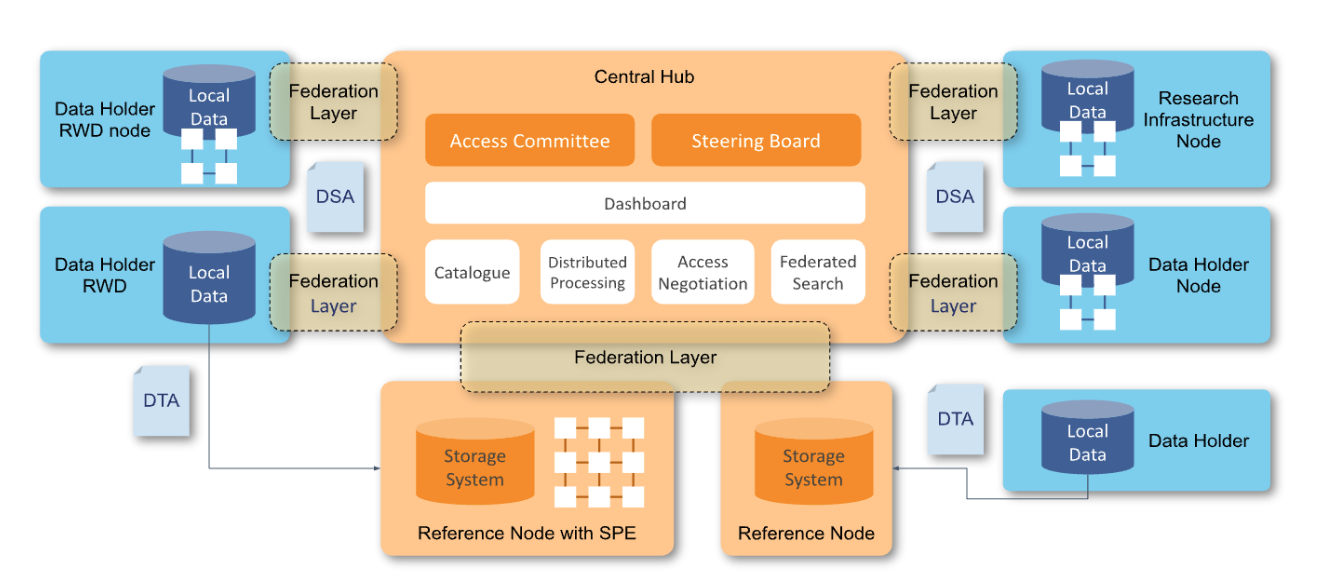What is a Federated Network?
A federated network is a decentralized system that enables multiple institutions to collaborate while maintaining control over their own data. Unlike centralized data repositories, where all data is collected and stored in a single location, a federated network allows data to remain within the institutions that own it. Instead of transferring large amounts of sensitive information, federated networks provide structured and secure mechanisms for researchers and analysts to query, analyze, and process data remotely.
One of the primary functionalities of a federated network is federated querying, which allows external users to search datasets across multiple institutions without needing direct access to them. Once the relevant datasets are identified, institutions may choose to transfer the requested data under strict governance policies. However, federated networks can go beyond simple querying and enable federated data processing, where institutions collaborate on computational tasks without exposing or transferring their raw data. In this model, algorithms are sent to local datasets instead of centralizing the data itself. Machine learning models, for example, can be trained locally on each institution’s dataset and then be aggregated to create a more robust global model, without any individual dataset ever leaving its original location. This method has been successfully tested and is proving to be a powerful approach for large-scale collaborative research while ensuring privacy and security.
 High level representation of EUCAIM federated infrastructure
High level representation of EUCAIM federated infrastructure
Key advantages of federated networks
Federated networks offer several advantages. First, they reinforce data sovereignty, allowing institutions to retain full control over their datasets and decide under what conditions they can be accessed or processed. This ensures compliance with regulatory frameworks and data governance policies. The model also enhances security, as sensitive information remains stored within the originating institution, reducing the risk of data breaches associated with central repositories. Instead of moving data across multiple locations, computations happen locally, and only the necessary outputs are shared.
Another key benefit is scalability. A federated system allows new institutions to join without requiring them to overhaul their existing data infrastructure. Institutions can participate at different levels, progressively increasing their integration based on their technical and operational readiness. Since data is not centralized, federated networks can also reduce redundancy by eliminating the need to duplicate datasets across multiple locations. This significantly optimizes storage efficiency and computational performance.
Federated networks also promote collaborative research while maintaining ethical standards. Institutions can contribute to large-scale studies without compromising patient privacy, and researchers can gain access to more diverse datasets, leading to better and more representative analyses.
Security and privacy-preserving measures
To safeguard the integrity of a federated network, multiple security measures must be in place. All communications within the network are encrypted, preventing unauthorized access to sensitive information. Strict authentication mechanisms ensure that only verified users can perform queries or computations, and anonymization protocols are applied to datasets to further minimize risks of re-identification.

